Priorité à droite

Although quite an old fashioned rule that has been around since the days of the horse and cart, the priorité à droite rule is an important one to know as it will potentially catch you out - and could result in an angry local blasting their horn at you.
So what does it mean?
Priorité à droite basically means "priotity from the right", i.e. you're required to give way to traffic emerging from a side road on your right hand side.
Historically this would have applied at all times, but with the evolution of the road network, the law has been amended so that the rule generally only applies when specifically signposted.
However, you'll still be expected to follow the rule where if there is no indication of who has right of way, which is particularly the case in rural areas.
It is also common in many villages where the rule is used as a means of traffic calming. A clue is often the lack of road markings down the centre of the road or at junctions - if they are absent then priority has usually ended.
Priority signage
There are a number of different signs that denote who has priority on a particular road, not just priorité à droite.
The most common priority signs that you'll see are white and yellow diamonds, which is the one that regularly catches out Brits and Americans. Here's a summary of the different signs:
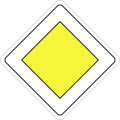 |
This sign denotes that you are on a priority road, and you keep priority until it is cancelled. |
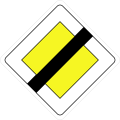 |
Priority no longer applies, you will be expected to give way ahead |
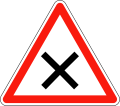 |
You must give way to traffic from the right at the next junction ahead. |
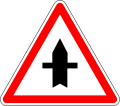 |
Junction ahead - you have priority |
On roundabouts
Roundabouts are very common in France, and the concensous has shifted towards using the standard practice of giving way to vehicles already on the roundabout.
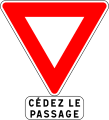 |
If the approach to a roundabout features this sign, then you are required to give way to traffic on the roundabout. |
However, there are still a number of places where priorité à droite applies. The most famous of these is the chaotic Place Charles de Gaulle in Paris, the roundabout in which the Arc de Triomphe sits in the middle of.
Boulevard Périphérique
An major inner city ring road is the last place you would expect to have to give way to traffic from the right. But this is exactly what applies on Paris' famous Boulevard Périphérique.
All traffic using the right-hand lane is expected to yield to vehicles joining from slip roads, which itself stems from the traditional rules governing Parisien boulevards.
Only traffic immediately joining or intending on leaving the Périphérique should be in the right-hand lane. Motorists intending to remain on the road should move into the second lane as soon as is practically possible.